- How Chengdu’s air quality compares to other cities in and outside of China
- Recommendations on addressing air quality at home for people in Chengdu
- A breakdown of the AQI figure: where it comes from and what it means
- Recommended equipment for measuring air quality and breakdown of sources on collecting information
- Local perception on the issue of air quality, and much more
How bad is the pollution in Chengdu? How does it compare to London, or Beijing?
Chris: The three cities listed here all have very unique characteristics, but we will try and provide a simple answer. London, as most may have guessed, is not even close to any large Chinese city in terms of PM2.5 yearly averages. London’s yearly average levels, according to research done by King’s College, are around 15 µ/m3 (15 micrograms per cubic meter). The next best in the group, in a very distant second place, would be Chengdu, coming in 4x worse at around 80 µ/m3. Beijing would bring up the rear with an average of around 100 µ/m3. The numbers vary depending on where you test in the city and during which timeframe, but this should help to illustrate the point.

One thing the yearly averages don’t tell you is how the pollution is spread out between good days and bad days. Chengdu is very consistent in its poor air quality. Most days in Chengdu are just not good, having a medium level of pollution, which would be considered unhealthy but not at hazardous levels. Very rarely will Chengdu have great days though, where PM2.5 levels are within WHO or EPA standards. The good news for Chengdu is that it does not have many hazardous days and the majority of these are concentrated in the winter months. Beijing is quite different in that it is anything but consistent. There will be days where levels are below what would be seen in any major western city. Two days later, however, it might feel like being stuck in an elevator full of people smoking.
If you were advising someone new to Chengdu on how to manage their health in light of air quality here, what recommendations would you make?
Chris: The first step would be to learn a little bit about pollution patterns in the city. To put it simply, the air is always bad by international standards and tends to be the worst in winter and best in the summer.
The next step would be to evaluate where you will be spending the majority of your time. One of the most common questions we are asked is which mask we would recommend for outdoors? This is a good question and one that should be asked. However, a better question should be “what should I be doing the other 23 hours a day that I am not spending outdoors?” This question should then further be broken down into what should be done at home, which is an environment entirely in your control, and what should be done at the office/school/factory where I spend my days, an environment that can also be controlled to an extent.
At home you should be keeping windows closed almost all the time. Very rarely are levels outside low enough that opening windows is safe. Nonetheless homes need to be ventilated regularly to help avoid stuffy indoor environments and indoor pollutant build-ups (chemicals such as formaldehyde from furnishings etc) as well as to encourage air circulation which can help reduce mold growth (a largely unrecognized issue in China). Your home should also be cleaned regularly with either a HEPA vacuum or a wet mop so that PM2.5 particles can be physically removed, not just sprayed around the room if you were to use a regular vacuum. The PM2.5 particles will inevitably make their way inside through the opening of the front door, leakage in the building and also being brought in on your clothes and shoes.
The most important item that every home should have will be an air filter. We could write a whole separate article on how to choose a suitable model, but suffice it to say that it needs to deliver enough filtered air for the space (see the Cubic Meters an Hour CMH that is listed for the model and the CADR rating). Ideally, you would have filters in every room or, if not possible, have a filter running in the room you are in and then moved into the bedroom before bed. Last point on this is to run your filters on high when first turned on for at least an hour and, ideally, keep them on a medium speed afterwards.
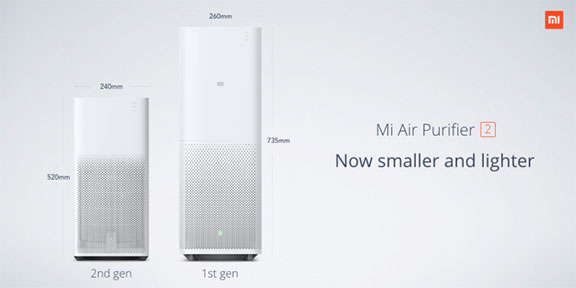
Controlling the environment at work will be a bit more of a challenge but, seeing as you will most likely be there 8-10 hours a day, is a necessary undertaking. The first step would be to speak to your company and ask them for a copy of a testing report for the office. This is legally required by Chinese law and looks mainly at chemicals like formaldehyde and benzene, giving either a pass or fail rating along with the tested value. This report will not give you the full picture as it may have been done years ago and does not look at PM2.5 or CO2. Additionally, we have found that quite a few companies never undertake this basic testing as enforcement is quite lax. Whether it be the outdated data, lack of PM2.5 or CO2 testing, or due to an absence of any testing whatsoever, this presents a good opportunity to ask for a professional testing company to come in and provide a full report and monitoring services to provide a complete and accurate picture of the work environment. As a business owner or GM this is not a time when you want to look at saving on costs by not testing or trying to “self-test” with gadgets purchased off of Taobao. It is becoming increasingly common for informed employees to call out their companies for lack of testing and, if there are actually problems with the space, even threatening lawsuits for providing an unsafe work environment.
At Pure Living, who are most of your customers? Are foreign companies more interested in your products than local companies? If so, why do you think that is?
Chris: At the moment the majority of our customers are Fortune 500 companies, almost all western. We do work with a few Chinese tech companies like Tencent (QQ, WeChat) and Alibaba, but these are usually the exception to the rule. One of the reasons we see Chinese tech companies using our services is that they are often competing directly with their western counterparts to hire the best employees. Besides salary, a comfortable working environment is usually a top priority for anyone spending 10 or more hours a day in an office.
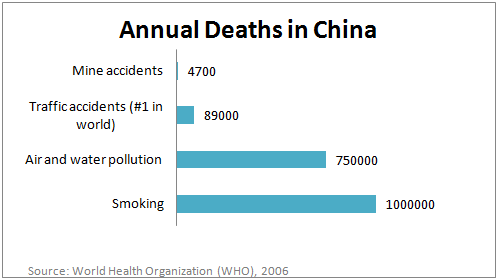
For any company thinking about this type of service it will consider how much money needs to be spent and how much benefit will it receive because of this investment. The money spent is easily calculated. What is more difficult to determine are the benefits that will be accrued as most of these cannot simply be measured in terms of hard currency. How much is it worth that someone chose to work here because of the Indoor Air Quality? How much is it worth that people are staying because of it? How much is being saved by having fewer sick days? How much is it worth that people are more productive with cleaner air and lower levels of CO2? How much is it worth if this system can be used as a marketing tool to give people a better impression of the company? The list goes on and on, but the main takeaway is that most of the value in doing something like this cannot be measured with a number, but needs to be looked at in the greater scheme of things over months and years.
What is AQI, exactly? Is it important for residents in Chengdu to know the meaning of the term?
Graeme: This is perhaps the most common misunderstanding. AQI stands for “Air Quality Index” and normalizes all air quality into a 0-500 scale, with 0 being the best and 500 being the worst. This was popularized by the US Embassy and is used most often because it is easy to remember and does not have units. API or “Air Pollution Index” is used by the Chinese government and is a similar index, but categories correspond to different levels of pollution, so the two cannot be compared.
Finally, mass concentration refers to how much weight in micrograms of a certain size of particulate in a cubic meter (ug/m3). Of these, the mass concentration is most useful because it is directly correlated to health standards. The WHO sets 25 ug/m3, the US EPA sets 35 ug/m3, and China sets 75 ug/m3 as the maximum limit for healthy air over a 24hr period.
Importantly, the China AQI index is lower than the US one, and therefore categorzies the same pollution levels in mass concentration to a less serious health status. The following pictures illustrate that at the same mass concentration (59ug/m3) the Chinese index rates it as ‘Light’ whereas the US one rates it as ‘Unhealthy’. Therefore, we advocate for using mass concentration in order to make like-for-like comparisons.
The following image also helps summarize the differences between the indexes:
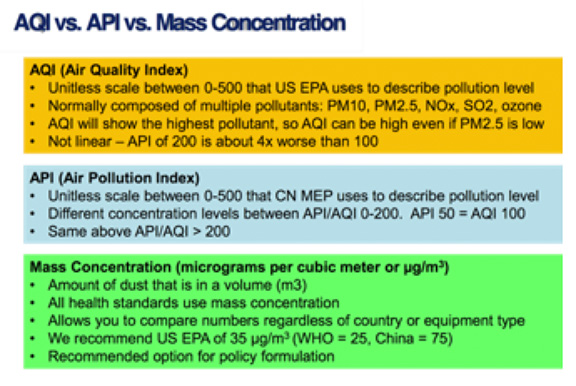
What do you think is the greatest misperception that people have about pollution in Chengdu?
Chris: While this has changed quite a bit over the last few years, the majority of residents do not regularly check either PM2.5 or AQI readings. Those that do check tend to be younger individuals who own smart phones.
The standard for most people is still looking out the window at the sky and taking a guess. If the sky looks particularly gray or smoggy they will assume it’s a bad day. This isn’t to say that their behavior will change in how they handle the pollution, simply that they assume it’s a bad day.
The problem with this is that it is simply an unreliable way to gauge pollution levels outside. There are days where there are blue skies but pollution levels will be unhealthy even by China’s lax air pollution standards. On the flip side there will also be days where one would guess pollution levels would be high because of an overcast sky but in fact levels are low and maybe only dangerous for people particularly sensitive to pollution.
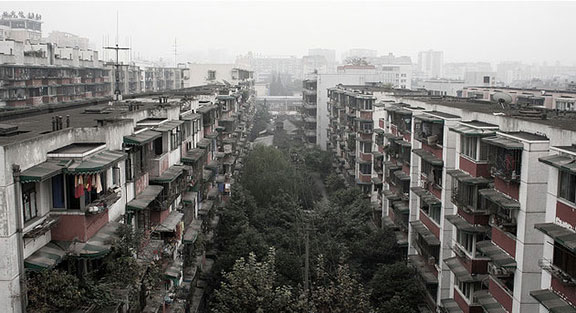
An even larger problem, and this is the area in which we operate, is indoor pollution. Most people in Chengdu operate under the completely false belief that if you are inside you are fine. This is not the case. Yes, most time being indoors offers a level of protection from the outside air, but we have seen plenty of instances where indoor levels of PM2.5 are far greater than outside. PM2.5 particles are brought indoors through open windows and doors, building leakage and on peoples clothes and shoes. Unless removed by using a HEPA vacuum or a wet mop these particles will stay in the indoor space, settling on the ground, on top of surfaces and suspended in the air.
Through real-time and long-term monitoring that we have done at about a dozen Grade A office buildings we will quite often see indoor PM2.5 levels much higher than outdoor levels during the hours of 7pm to 7am and on weekends. The reason for this is threefold:
- People are bringing in PM2.5 particles on their clothing and these are settling in the office
- The office spaces are not cleaned properly, often just using a normal vacuum that sucks up PM2.5 and just shoots it out the other end accomplishing nothing
- The HVAC (air conditioning and heating) systems are off at this time and there is no re-circulating air and no filtration taking place.
Through monitoring data, we have found that the protection level from a building can vary greatly and can offer anywhere from 20% to 50% protection on its own. In a residential building you will most likely have a low level of protection from the old walk up apartments (6-7 story gray buildings) of around 20% and up to 40% protection in high end apartments that are new. In an office building things are sealed tighter and protection levels may be in the 30% to 50% range based on the age of the building and the grade of office.
This reduction is critical, but all too often people are sabotaging this by having windows open, smoking indoors and not cleaning properly. It does not matter if you are in the nicest office building in the city, if you are not cleaning properly PM2.5 levels will remain high in the space.
While not technically pollution in the traditional sense, most people do not tend to think too much about the materials and furniture around them. Yes, when a renovation has been recently completed most Chengdu residents are very concerned about odors and chemicals. The typical approach taken means leaving the space left unoccupied for months or a year and involves the rinds of various fruits and placing them around the space with little carbon bags and maybe even coffee grounds. This is not an effective approach as it wastes time and accomplishes very little (though carbon pouches can be effective in small enclosed spaces such as cabinetry). However, a year or two after completion there will be little attention paid to this. Paint, carpet, flooring, glues, furniture and a host of other items can continue to “off-gas” and put harmful chemicals into the air for years to come. If there is no odor it doesn’t mean there isn’t a problem. If there is an odor, it does not mean that there is a problem: it depends on the odor threshold of the target chemical and the related exposure threshold as well as the olfactory detection disparities of individuals. That is why IAQ is a complex mix of people perceptions, human behavior and building operations and mechanical systems. So when it comes to indoor air pollution a well-planned investigation is required and not just a round of air tests.
With regard to air pollution, there’s a lot of conflicting information: are locally-produced numbers on pollution trustworthy? What is the most credible source of information on actual conditions?
Graeme: Any official outdoor monitoring station that is maintained by a Chinese environmental monitoring station is pretty accurate and can be used as an outdoor reference. The US Consulate also maintains an outdoor monitoring center, but this should not be used if there is a closer one. Generally, readings are fairly representative if within 1-2 kms. If beyond that, consider setting up a local outdoor monitoring center.
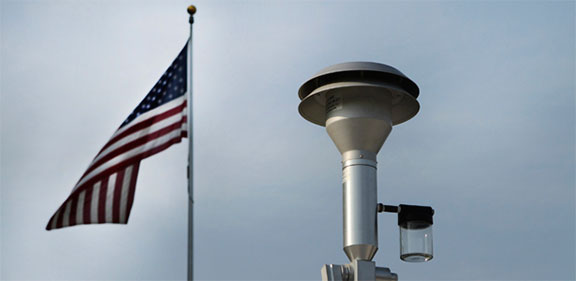
What source of information should we reference?
Graeme: Hourly outdoor air quality data is now available widely throughout China. This data is republished by many different free applications. We favor apps that allow you to see historical trend data, and those that publish both AQI and mass concentration. Our favorites:
- ?iOS: China Air Quality by Fresh Ideas Studios
- Android: China Air Quality Index by Bood Qian
- iOS & Android: Air Quality China for Mobile
What equipment do you use to measure and filter air pollution? What equipment can you recommend to consumers?
Graeme: There are a lot of different air quality monitors out on the market. A handheld device that purports to measure PM2.5, for instance, can range from a 500 rmb domestically produced model to an imported model from the US that runs 30,0000 rmb. The main difference is the experience and reliability that usually translates to data which is accurate and stable, across a range of likely conditions.
For using indoors and solely to measure PM2.5, the Laser Egg by Origins Technology is a solid bet and inexpensive. If you want more parameters such as chemical concentration, carbon dioxide then you’ll be looking at quite a bit more.
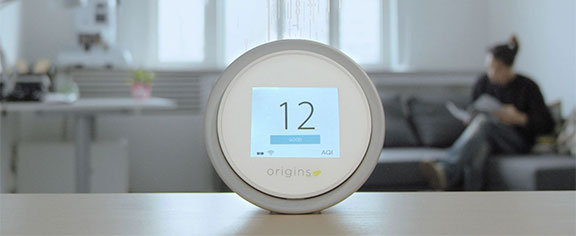
In the time that Pure Living has been in Chengdu, do you feel there have been any changes in the perception of air pollution here? Has your perception of the situation changed? Has pollution gotten worse or better in that time?
Chris: I would certainly like to believe that, in the one year PureLiving has been in Chengdu, that there has been a complete change in people’s views on air pollution, specifically indoor air pollution, and that people are knowledgeable and asking questions. The truth is that even after lots of events, talks and education seminars, we have only begun to scratch the surface in getting the word out.
The best thing that happened in regard to pollution awareness was the US Consulate providing real-time monitoring. This brought the subject to everyone’s attention and the Chengdu government took a great step in setting up quite a few more monitoring stations and began sharing the data with the masses. The next step is to move from the outdoors and to start thinking about pollution indoors. Whether walking into a school, office or shopping mall, there should be data on a screen at the entrance to let one know about PM2.5 and VOC (chemical) levels inside. Even better, if this data were online and people could choose to visit (or not visit) a particular restaurant or mall because of the pollution levels inside.
My perception of the situation has changed a bit from the beginning. I assumed, incorrectly, that people’s knowledge of air pollution would cover indoors as well. I imagined companies lined up around the block to ask about testing their offices, monitoring their offices and even doing upgrades to the filtration system (that is even if there is one, which oftentimes there is not). This has not happened, but through education and awareness we are moving in a direction where the types of services we provide will become commonplace. The only question is the time frame; will we see most companies adopt testing and monitoring in the next 2 years or is this something that will take 5-10 years to become common practice?
It’s hard to say whether pollution has gotten better or worse in the last few years. The safest answer would be to say that it’s about the same. PM2.5 levels vary year to year based on the weather alone. Anytime there is wind or rain in the city you can expect to see a drop in levels of PM2.5. What can be said is that pollution from automobiles would be worse as there are simply more cars on the road. On a positive note, many highly polluting factories have been moved outside of the city and Chengdu’s heavy industry was already a smaller segment than a lot of other cities to begin with.
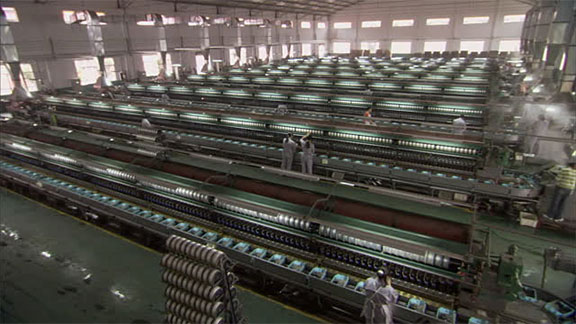
By your estimation, what are the greatest contributors to pollution in Chengdu? Looking 5-10 years in the future, do you see the situation improving, or is air pollution something that we should come to terms with, instead of hoping that it’s solved within the next decade?
Graeme: Great question. I’d like to cite a recent scientific study conducted in 2014 of PM2.5 pollution in Chengdu that I often summarise and take bits from when communicating with different stakeholders. The study highlights local anthropogenic emissions as well as the unique topography surrounding the city and concludes this is conducive to air pollutant accumulation and enhanced PM2.5 pollution, which makes these factors very unique to the Sichuan Basin. PM2.5 levels in Chengdu are consistently unhealthy.
There’s a variety of contributors with the main ones being secondary inorganic aerosols that are formed via gases (such as sulfur dioxide and nitrogen oxides) emitted mainly from coal combustion, vehicle exhausts and biomass burning, which then interact with ammonium from agricultural activities. They’re secondary as they are formed after other pollutants are released and mix together. For example, iron and steel production is a major source of arsenic particles, and biomass burning is major source of lead (Pb), sulphates and nitrates which interact in air to cause other harmful pollutants.
Coal is still the most predominant fuel used in China, adding significantly to black carbon emissions, airborne lead (Pb) and a host of other contaminants. We recently tested indoor airborne lead levels as part of a residential project and results showed levels 2x above the health limit set by the U.S. EPA; China only has standards for industrial emissions of lead, which are way too high to be applicable to normal residential settings.
Although heavy industry was relocated from Chengdu’s urban proximity (between 2008-2010), most were resettled in northern areas such as Qingbaijiang industrial zone and Jintang county, situated in the upwind region around 20 km north of Chengdu. This results in the emissions of such activities flowing back downwind into the city bringing with it the associated pollution. So even though seemingly positive measures were taken to relocate heavy industry, Chengdu’s unique topography has exacerbated the problem of the pollution accumulation.
Looking 5-10 years to the future, China’s reliance on coal will have reduced somewhat; however, will still comprise 60% of the total energy mix in 2020, according to the Carbon Brief. So although there are policies aimed at dealing with air pollution, and EURObiz recently published an article showing how PM2.5 levels nationally showed a reducing trend in 2015, average national levels are still twice that of the WHO 24-hour health limit (25ug/m3); Chengdu’s annual average is roughly 80ug/m3 to put that into some context. Furthermore, China accounts for almost half of world iron and steel production as of 2010 meaning economic policy is likely to remain coupled to air pollution.
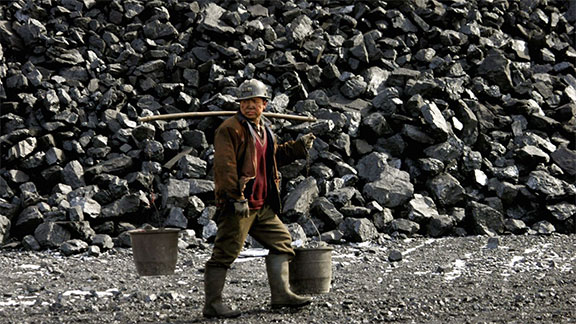
Based on this, it is unlikely that ambient air pollution will be solved within the next decade. Coal will still have an important role to play in the energy mix and heavy industry looks likely to play an important contributor to the economy.
Chengdu PM2.5 concentration is higher than those in many cities around the world, and although Beijing (often used as the benchmark) has its very high peaks (often surpassing the maximum AQI level of 500), it also has days of good air quality, such is the erratic nature of the capital. However, Chengdu’s air quality remains consistently unhealthy year-round.
Read more about PureLiving on their official website. Have any thoughts on this interview? Leave a comment below.
This makes grim reading. I’m usually vigilant with regard to closing windows and using my air purifier, but lately the hot and humid weather makes this impossible. Let’s face it, we live in a dirty, unhealthy city.
Recently I don’t open windows much at all because of the heat, not pollution, but that had not been something which I thought much about until reading this. There are positives and negatives to living in Chengdu, the pollution is the most salient negative that I know of. But I insist on looking at the positive, which is that we have resources at our disposal like this information, easy/cheap access to air filters etc, to make the best of the situation.
Before publishing this interview I had a conversation with Graeme and Chris where they strongly recommended the Laser Egg, which they mention above. Since then I’ve had this thing turned on 24/7 in my living room and it displays a constant readout of the AQI or pm2.5 values (there is a toggle switch). Having this has running all the time and in a viewable position has had a dramatic impact on me being more mindful of the indoor air quality. Highly recommended, only costs a few hundred RMB: http://originstech.com/products/laser-egg/
I have the Xiaomi air filter myself and I think it’s definitely helped, as I used to have mornings where I’d just wake up coughing, and rarely have that any more. The Xiaomi app supposedly monitors the PM 2.5 level (or AQI?) through the filter but I’m not sure how accurate it is.
I have the problem right now that they mentioned of my apartment getting stuffy because I’m rarely opening my windows. They mention properly ventilating but I’m curious if anyone here has a method for that besides just opening the windows for a few hours
The Xiaomi measures AQI (and pm2.5 I think) but it’s not as accurate as the LaserEgg which they recommend. I have been using that recently, it is very good. The only downside is that the device cannot be re-calibrated, so it eventually will lose accuracy. Still, for the price I don’t think it can be beat.
If you haven’t already, try getting some more plants in your apartment to freshen up the air.
https://www.weforum.org/agenda/2016/06/why-turning-smog-into-diamonds-isn-t-as-crazy-as-it-sounds
Isn’t it interesting that people in Chengdu are unable to access this website about Chengdu.
It is… unfortunately people in Chengdu are unable to access a lot of websites.
Air purifier for Rental
I have many brand new Air purifiers available and wish to rent them out, they are more than average want to afford in here or simply the air-pollutoin were not serious enough to raise the awareness and driven locals to put money on them. So I’m thinking rent them out would be a win-win for those who really need them for a few month or a year.
they are ionizer purifiers which consuming nothing but a little of electricty, actually I never turn mine off in the winter. it’s pumping at a rate of 240m3/hr and adjustable. they do not require any consumable materials or frequent clean up.
I only ask for a few bucks per day at Max depends on how long you need it, you can keep them as long as you think the price is still fair, just make sure to return it to me before you leave.
For detail contact: 15882495497 better text during working days
QQ: 879966417
[email protected]
WeChat: Sharlingstore
How much do you rent them for? This advertisement sounds a little sketchy.
Enjoy gooy 4 20 flowers in chengdu,ryanray5050 atgmaildotcom
I live in Chengdu. I agree with the article. I am happy to enjoy the totally clean indoor air generated by the world’s best air purifier IQAir. The air provided by this purifier is as fresh as the air in the Swiss Alps. The only downside of this purifier, which is using very few electricity to operate, is that its filters are considerably more expensive than any other product on the market. However, I attach great importance to breathing clean air, so I am willing to pay the price. About 80 – 100 RMB for clean air per month is ok, some people spend more money for downloading movies on their cellphones…
World’s best air purifier? Do you work for IQAir or something? The only thing which matters is the AQI (or PM2.5) level of the room you’re in, and other purifiers are certainly capable of achieving the same results as an IQAir filter at a fraction of the cost.
No, I don’t work for IQAir. And yes, IQAir is the world’s best air purifier. It has a filter which goes beyend HEPA filter technology. Why else would it have been used in hospitals during SARS?
In the settings where perfect performance counts, preference is usually given to IQAir… The cheaper air purifiers just don’t do the job.
By which objective measure do you consider IQAir to be “the world’s best air purifier” exactly?